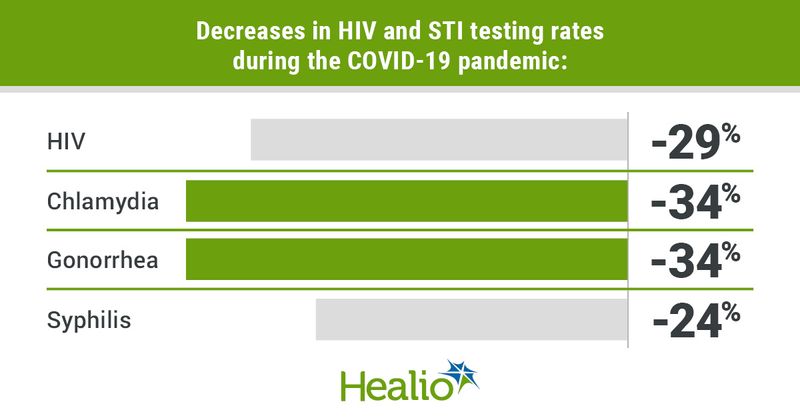More data show decline in HIV, STI testing during COVID-19 pandemic
Click Here to Manage Email Alerts
There was a “profound” reduction in testing rates for chlamydia, gonorrhea, HIV and syphilis in Southern California during the COVID-19 pandemic, researchers reported at the Conference on Retroviruses and Opportunistic Infections.
Along with reduced testing, there were reductions in the rates of diagnosis for chlamydia, gonorrhea and HIV, whereas syphilis diagnoses actually increased.

The pandemic has caused major disruptions in the field of STDs at a time when the United States has seen year after year growth in the number of cases.

“The COVID-19 pandemic has disrupted routine medical care and has impacted sexual health and treatment services,” Jennifer J. Chang, MD, a physician for Kaiser Permanente, said during her presentation.
“Contributing factors included provider-driven decreases in face-to-face visits, patient-driven concerns over accessing health care safely, shortages in testing reagents and materials, and locally in California, public health reallocations from STI to COVID-19 mitigation programs,” Chang said.
Chang and colleagues conducted a retrospective study using the electronic health records of people aged 12 years or older who were enrolled in the Kaiser Permanente Southern California system — a racially and ethnically diverse study population of more than 4 million, Chang said. They reported rates per 100,000 person-years of tests conducted annually from 2017 to 2020.
Compared with the prepandemic period, when there were consistent increases in screening for HIV and STIs, testing rates from March to December 2020 decreased for chlamydia by 34%, syphilis by 24%, gonorrhea by 34% and HIV by 29%.
Diagnosis rates were lower as well, including 30% lower for chlamydia, 5% lower for gonorrhea and 24% lower for HIV. The incidence of syphilis was 19% higher during the pandemic.
“As gonorrhea and syphilis often have symptoms that prompt patients to test for HIV and STIs, we believe that these data overall suggest an underdiagnosis of HIV and chlamydia, which are often clinically latent or asymptomatic in nature,” Chang said.
She said during a press conference that the declines in screening “can potentially have a really long-term impact on public health efforts to slow the spread of infection.”

